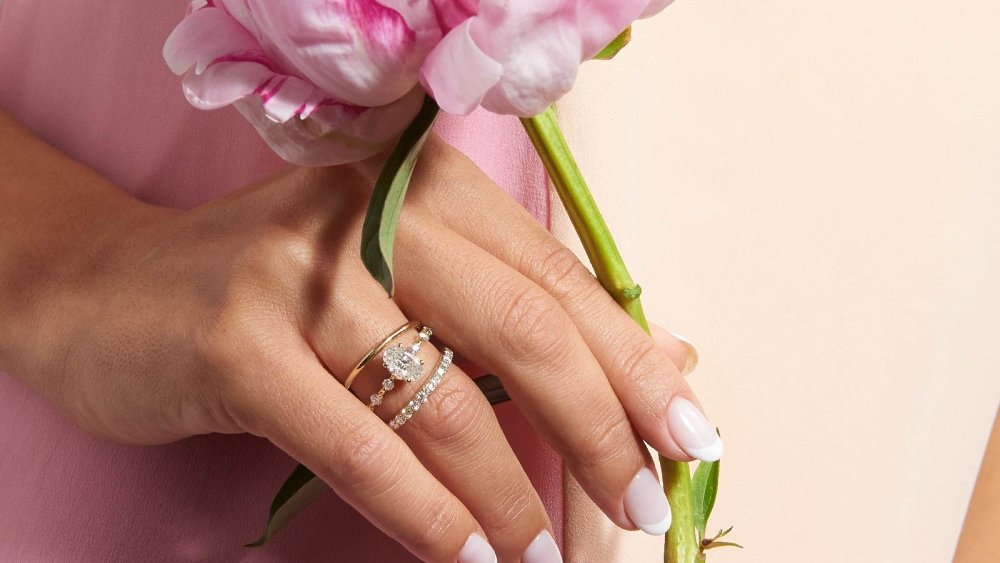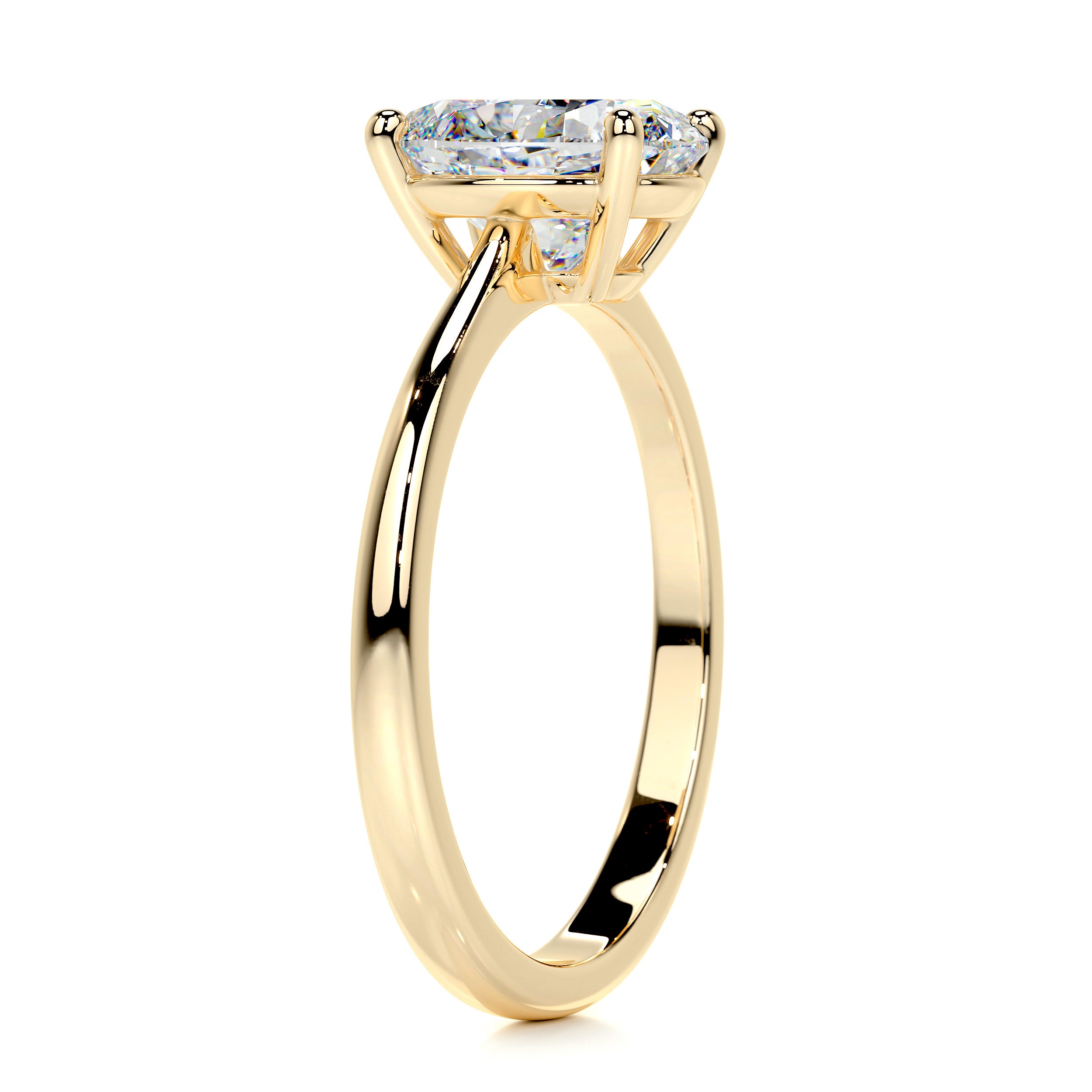Are you overwhelmed by all of the information out there, that is meant to help you choose the perfect engagement ring setting? Whether you have known for your entire life what your engagement ring would look like, or only know which the shape or carat size of the diamond that you want would be – or even if you have no clue what you should get, check out this tutorial of different engagement ring setting styles available today.
1. Solitaire
This classic style is wildly popular for a reason. It is the setting that shows off the center stone the best, so whether you chose a diamond whose shape that you really want to show off, or you just really want the diamond to be the star of your ring, this is the setting for you. In this engagement ring setting, your diamond will really shine as all of the focus will be on that diamond itself, and not on any of the supporting elements.
But simple doesn't mean boring! Even within solitaire rings, there are various styles to choose from. You may choose the classic four setting, the modern and stylish 6 prong setting made famous by Tiffany & Co., or even an 8 prong, double-claw look.
Many brides also choose to embellish their solitaire set rings with interesting elements such as millgrain or beading, which give their ring band an interesting dimension while still staying true to the solitaire look and feel. In addition, the ring band can be flat or rounded, depending on how you prefer your ring to look and feel. Although Solitaire seems like the simplest setting, in actuality it can be a very interesting setting.

2. Halo
The most popular ring style, a halo setting can be found with diamonds of any shape and size. A halo setting is a circle of very small diamonds (called melees), set around the center diamond. Often, it includes additional diamonds set along the shank (the sides of the band) of the ring.
The halo setting is particularly glamorous because it adds a huge additional element of sparkle to a ring. In fact, many times a diamond can be made to appear larger by setting it in a halo setting, because the diamonds that surround the center stone will add so much to the look that the sparkle appears to be in a much wider radius. A halo setting also adds a lot of presence to a ring, attracting many more eyes because of the visual excitement that it presents. Many women who want their engagement ring to be really memorable and really stand out will choose this setting.

3. Custom design
For those people with whom a certain symbol has special meaning, or who feel attracted to a particular shape or design, a custom setting might be the best choice. Settings like these involve a lot of imagination, but as long as the wearer has an idea of what they are looking for, almost anything is possible with a piece of jewelry. Many a bride has dreamed up the perfect ring, and many a groom will have just the perfect ring in mind that will symbolize this step in their relationship. Some interesting custom designs that we have seen include criss-cross halos, the shape of a certain map, the letter of a woman's first name, and others. As long as it is a design that you will love, the possibilities are endless!
4. Pave
For those who want a special engagement ring setting, but still want their center stone to be the star of the ring, a pave setting might be fitting. Closely related to the sidestone setting, a pave setting usually sets the center stone as a solitaire, without any embellishments, and adds the flair in the form of pave set diamonds along the shank of the ring.
This additional flair gives the ring a significant boost in sparkle and brilliance, combining the subtlety of a solitaire setting with the attractiveness of additional diamonds along the sides. Brides who want a classic yet statement making setting choose this style for this reason, as it is not as wildly popular has the halo setting, but is very close in terms of appearance.

5. Sidestone
The sidestone setting is often grouped together wit h the pave setting, although in actually the two are not exactly the same. A pave setting typically has more diamonds down the shank than a sidestone setting has, making the two settings more appropriate for different types of people. A sidestone setting, with its approximately 5 or 6 diamonds on each side, is an even more delicate combination of solitaire and halo settings than the pave setting is.
Some wearers choose to go the route with as much sparkle as possible, however, not everyone chooses this way. Some people may not want their ring to be so incredibly noticeable by others because of the way the eye is drawn to their hand. Others may be afraid that although they want a very glittery ring, they may lead too active of a lifestyle for a pave set ring to be a practical option. To both of these types of people, a sidestone setting is a lightly safer way of getting the look that they want, while keeping other relevant factors in mind.
6. 3 stone
A rare but beautiful setting that is not commonly seen nowadays is the three stone setting. Often, when the center stone of a ring is quite spectacular, or alternatively, not very impressive, adding 2 interesting diamonds on either side can significantly enhance the look of the ring. For example, baguette shaped diamonds and half moon shaped diamonds can often be found as the shoulders in a three stone ring setting. The side diamonds in this setting add substantial interest to a ring. This setting is very common with vintage diamond rings.
7. Gemstone
A very unique and often meaningful setting for an engagement ring involves incorporating a gemstone into the setting. Some very famous people including royalty have chosen to place a meaningful colored gemstone in the center of their customized engagement ring.
Whether you choose a three stone setting where 2 gemstones, such as 2 emerald, 2 sapphires, or 2 rubies flank the sides of the diamond, or you choose to put pave set gemstones along the side of your band in a pave or sidestone setting, there are many original and exciting ways to include gemstones in your ring setting. Some couples choose to incorporate gemstones because of the properties of the stone, such as how Ruby is meant to have healing properties, Sapphire is meant to have cooling properties, and Emerald is meant to have fertility properties. Others do so because of the significance of the color to their relationship. Still others may choose gemstones because of the significance of a certain birthstone to their relationship, such as the birth month of the bride, of the groom, of the month that the got engaged, of the month of a child, of the month of their wedding, or other significant dates.
While the information and choices between so many engagement ring settings may seem overwhelming, ultimately the decision is yours defined by your budget, and your personal sense of style. You may want to have a ring that looks just like your mother's, or to design a ring with extra special significance to your relationship. Regardless, know that every ring is beautiful and you will treasure your forever.
- Expert tip: Order your wedding band at the same jeweler who sold you your engagement ring. They will often give you a discount if you buy both through them (such as us!)




















